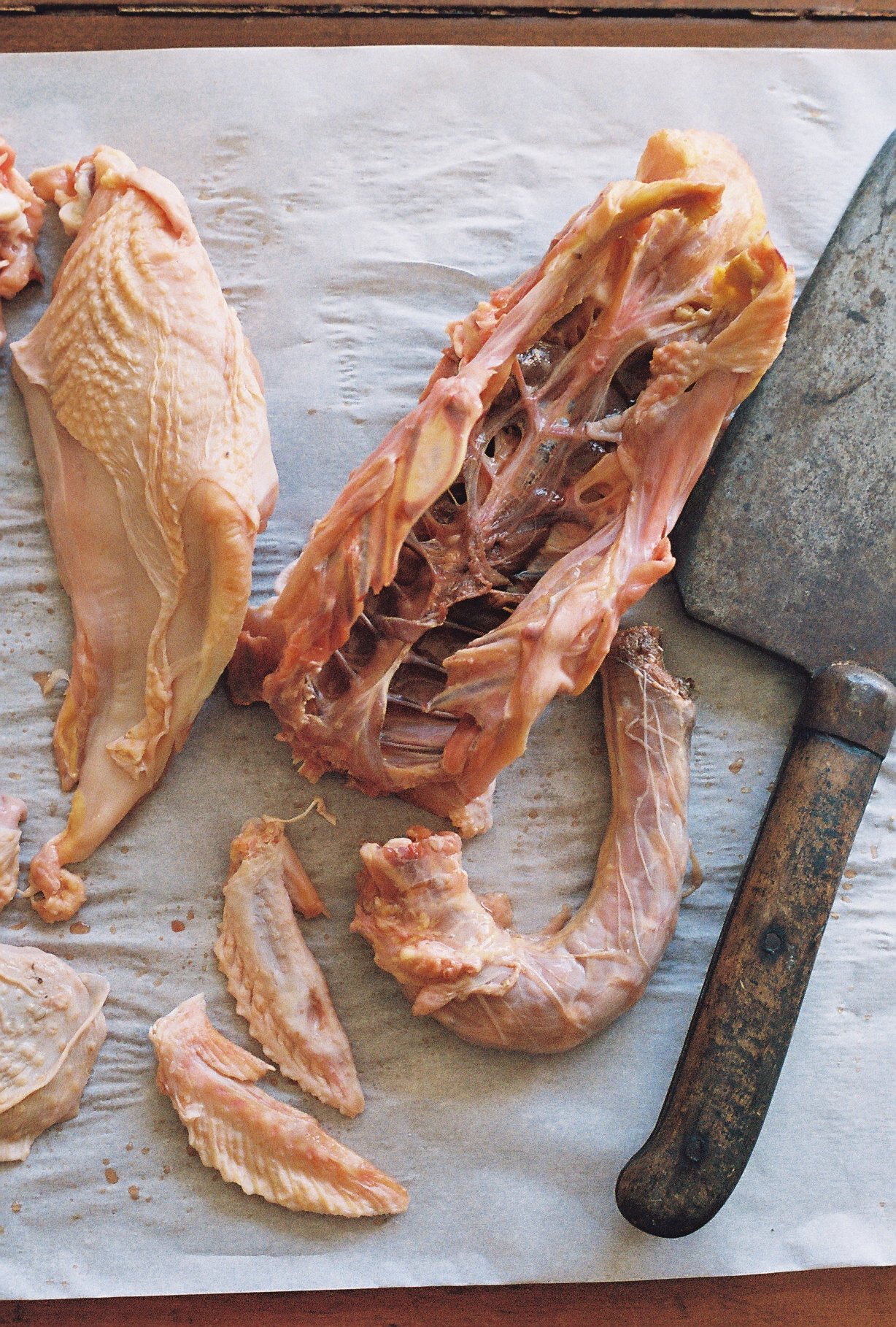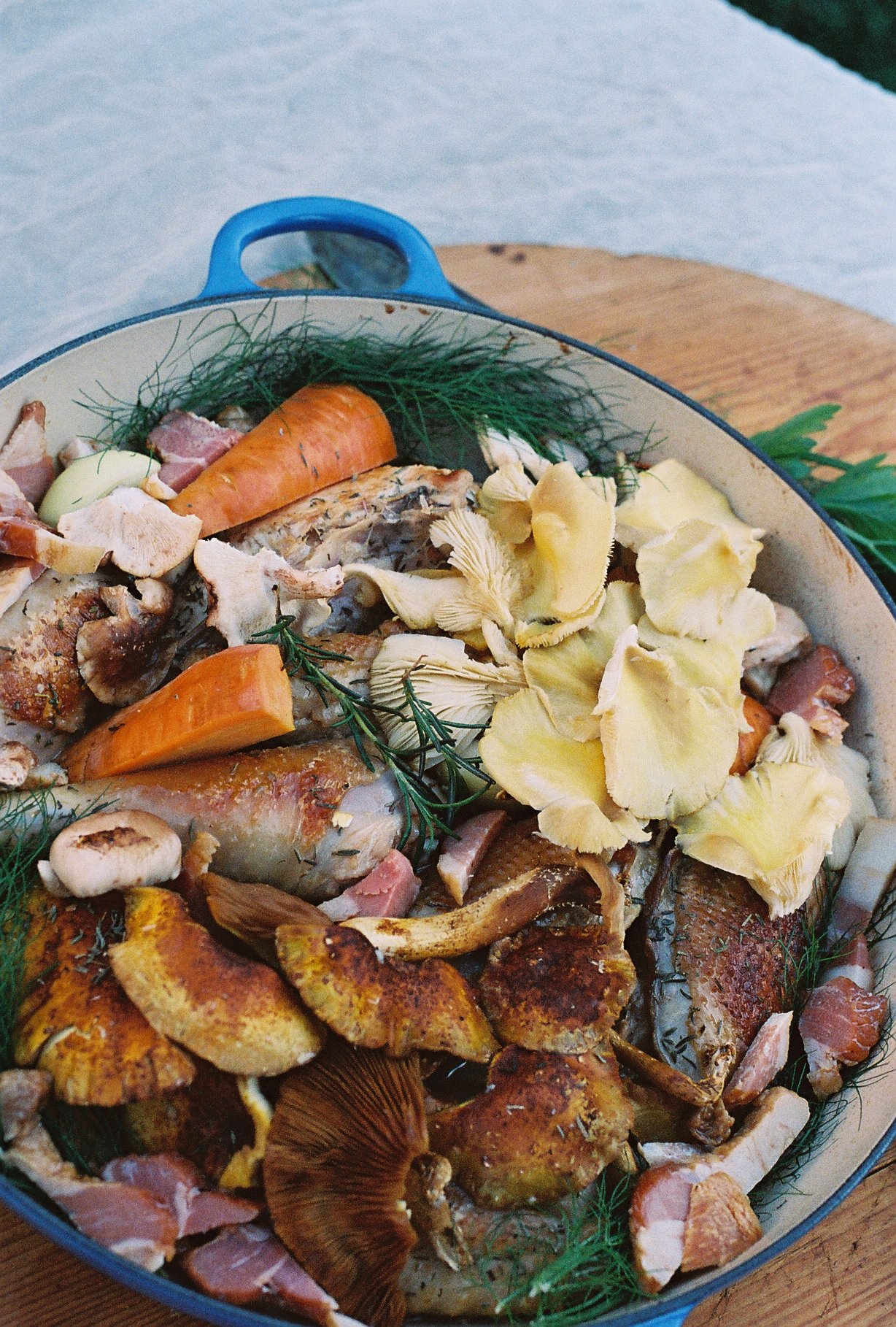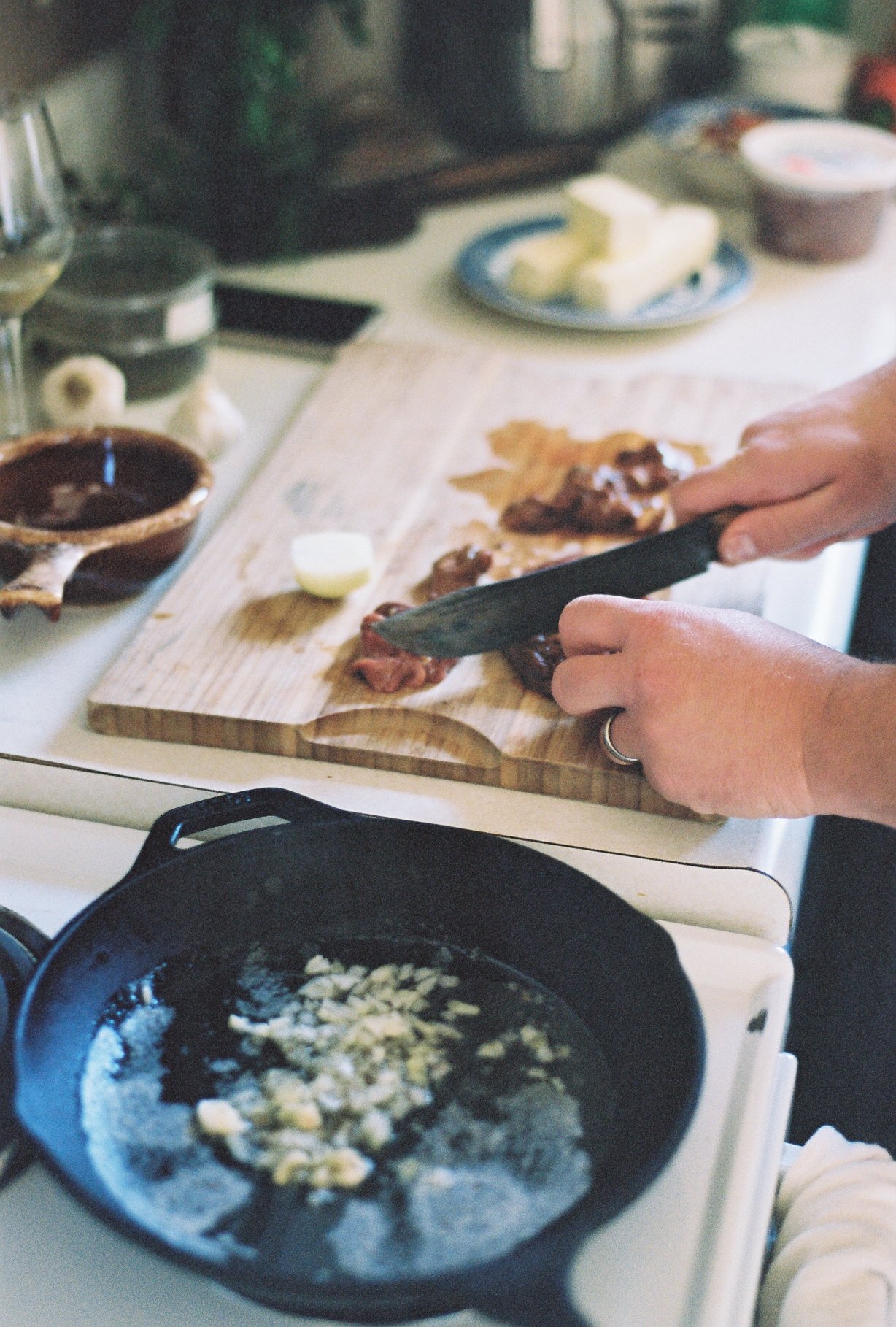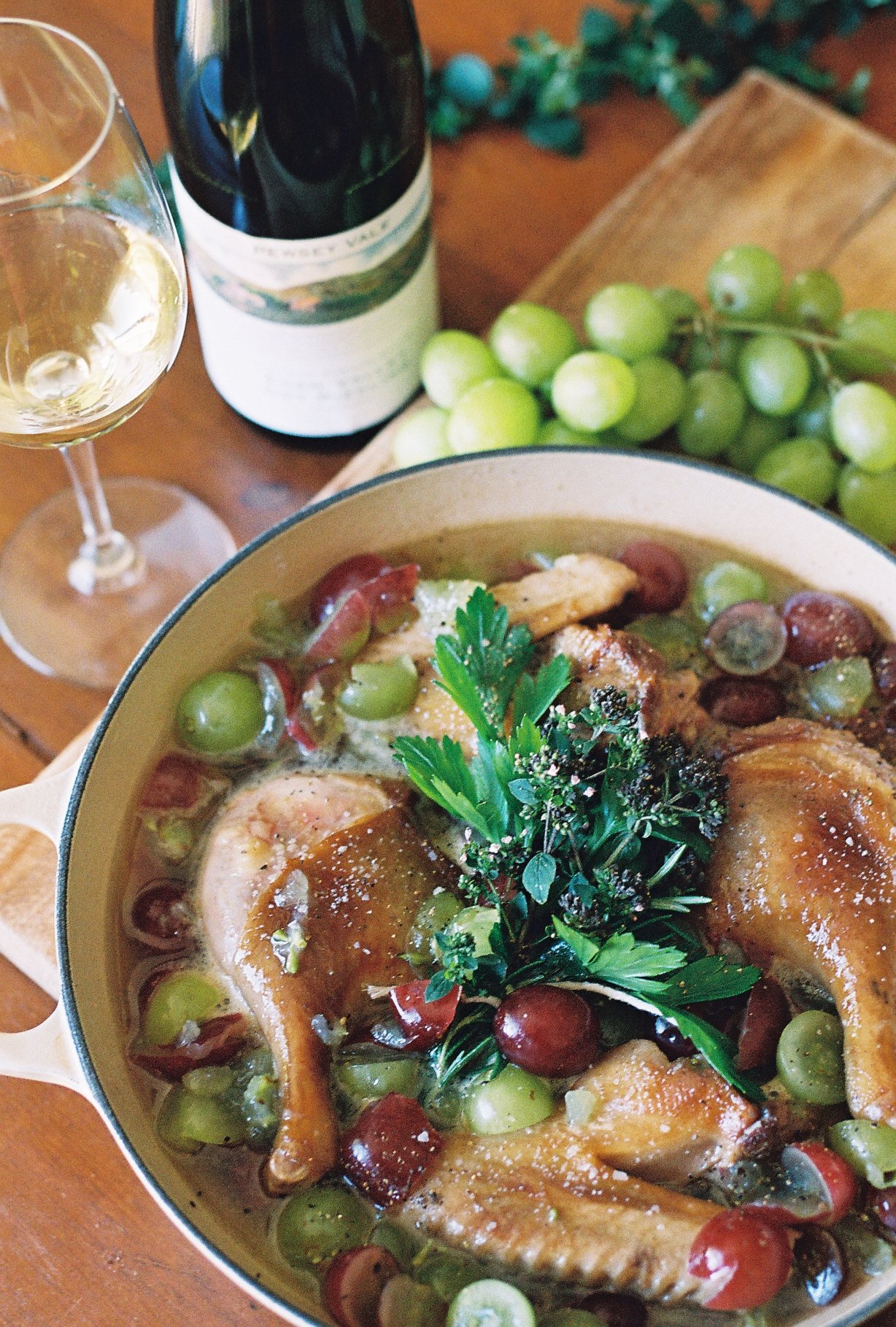Culling and what to do with those Culls -part II
Above: Dorking stew hen, Coq au Vin Blanc with beautiful shrooms, duck being cut up for the kitchen Photo Credit-Katie Carothers
As winter approaches the birds are now 6 to 8 months old. These birds are traditionally called roasters and are perfect to roast in a moderate oven on those cold winter nights. At this age, the pullets should be nearing lay, and a good hard look needs to be taken at each one. Comparing each to her sisters, the pullets that are slower to mature and lacking in size and pelvic width can be killed to allow more room for the superior females to grow out.
Cockerels this age will really start to show you their strut. Like the pullets, cull the cockerels that are smaller and slower to mature, and those who aren't starting to exhibit their libido. Weak males at this age will produce weak chicks in the spring, if they are even fertile at all. One must even take into account the pelvic width on males. Of course, he can't lay eggs, but he can pass this trait onto his daughters.
Once the birds hit nine months to a year or so, culling should be ruthless and with a goal in mind. If any bird, cockerel or pullet, left alive at this age is of standard weight, they can stay a while longer to be judged on production and longevity. Dorkings are meat birds through and through and their type is a reflection of that. A large, well filled breast is very important; Dorkings have always been revered for their white meat. Growth slows dramatically once a hen starts to lay, with the bulk of her nutritional intake going to egg production. If a female hasn't reached her standard pullet weight by the time she lays her first egg, she probably wont make hen weight by the time she's one year old. Broodiness is a key trait in Dorkings, so we must consider that the bigger the hen, the more eggs she can cover. Craig has told me that Bruce Lentz (and others) would cull a female if she didn't go broody in her pullet year. Of course for this to work, you have to manage your flock for broodiness. This means keeping a nest or two in each pen with a clutch of fake eggs so a female wanting to go broody has someplace to set.
Cockerels at this time should be under the hardest scrutiny. The male is half of the flock, and any flaw he possesses will be passed on to his offspring. Once the adult molt comes around, you can be fairly ruthless on color faults as the color is not likely to change in subsequent molts. Birds of this age are exhibiting their sexual traits. Once a male crows, it is said that his flesh becomes hard and tough therefore different cooking methods must be taken into consideration at this age. Methods such as braising and those with lower, slower heat and a quantity of moisture are best. Canning is also a great way to use old birds. Pressure canning yields tender and delightful chicken that makes meal planning a snap. I can legs, thighs, wings, and breasts separately so each jar has a specific use in a recipe. Once I have all those cuts canned, I take the remaining carcasses and boil them down in the stockpot. The luscious chicken stock, when strained, is delicious and so easy to can with the pressure canner.
If you have culls (of any age really) that are too good to kill but not good enough to stay in your breeding pens, selling them off can be a good way to get a newcomer started in Dorkings. You're never going to sell your best, but don't sell your worst without full disclosure either. Whether you take them to auction, a swap, or a show's trader area, be honest and forthcoming about what you're selling and why. Don't get a youngster started in Dorkings with birds that should've been killed when they were 2 months old. Selling the better female culls simply as “Ready-To-Lay” pullets is a great outlet for those folks wanting a few affordable backyard hens but don't care about pedigree.
Only in the busiest of times and with much dismay, will I kill a bird and it not be destined for the table. I hate to do this, it seems wasteful and disrespectful. This is often only the birds that are sickly or way too small to process for food. Still, they are not put in the trash. I have a large deep hole dug near the garden that serves as a pit for the culls I handle this way. Culled chicks and birds that die naturally are disposed of here as well. An occasional scoop of lime dust helps to clean the odor and with a sturdy wooden lid, predators are not a problem. When full, top off with soil and all will go back to our Mother Earth. I've heard of other folks composting their dead and culled birds as well, but I'm leery this will attract predators.
Lastly and most offensively, I once read about a breeder who left those that died in the pens with the others. While this is most unpleasant, there was a purpose: those alive will peck at the dead and not each other. The belief was that such a practice, which was used on gamebird farms (pheasant, quail, and partridge), helped the flock get immunity. The disease in the dead bird's cells acting much like giving a killed vaccine. However, this is certainly gruesome and can you imagine having to explain that to your friends or those coming to see you flock?
The majority of the birds you raise are not going to improve your flock's overall quality. That majority must be killed or sold, eaten or composted. For the farmer, the frugal cook, and those striving for sustainability, culling and cooking go hand in hand. At the end of the day, our beloved Dorkings are THE premier meat breed. Use them respectfully and they will repay you so well.
Next week, I’m thinking it’s time to incorporate a recipe or two. Let me know what you’d like to hear about in the comments below! Stay warm, stay hydrated, and use those Dorkings.
-Dylan
Above: Coq au Vin Blanc with Oxheart carrots and fabulous mushrooms, Duck liver pate in the making, my take on Duck Veronique Photo Credit- Katie Carothers





